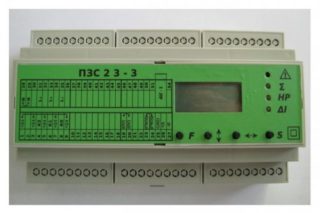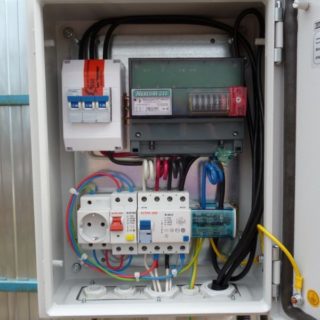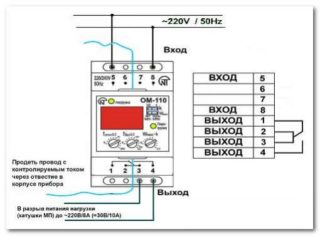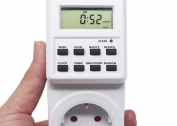The purpose of the power limiter is to control the received voltage. In case of exceeding the permissible load level, the consumer's electrical network is automatically turned off. If you turn on a larger number of devices than is planned, the relay will turn off the overall power supply to the circuit. There are various types of devices with certain functions. To choose the optimal limiter, you need to familiarize yourself with them in advance.
Purpose, functions, types of power limiters
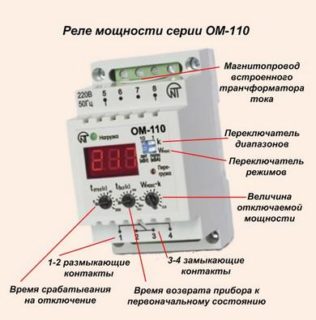 Power surges and power surges are a common problem in modern electrical networks. The number of devices in the premises is constantly growing, and most of the electrical installations and wiring are installed more than two or three decades ago. Therefore, it is necessary to install additional equipment. Indispensable are devices for one and three phases.
Power surges and power surges are a common problem in modern electrical networks. The number of devices in the premises is constantly growing, and most of the electrical installations and wiring are installed more than two or three decades ago. Therefore, it is necessary to install additional equipment. Indispensable are devices for one and three phases.
If the voltage exceeds the permissible limits, the limiter opens the electric circuit. This allows you to save technical devices for domestic or industrial use (depending on the type of device). Additional protection is necessary for most of the technology, especially digital and high-power: computers, washing machines, stoves. Main functions:
- Monitoring the input current level.
- Providing protection against unauthorized connections. Often, subscribers are included without notifying the relevant organizations, which is illegal. The limiter controls the number of users and the level of permissible voltage.
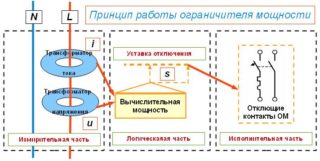
- Control of some mechanisms, for example, a car engine, microwave, scooter, emergency systems.
Due to the wide range of applications, manufacturers are constantly improving limiter models. Every year, new devices are introduced to the market, so it is important to understand the details and description.
Types of devices
Models vary in technical characteristics: allowable voltage, scope and other parameters. Popular are:
- PF10 - connected to equipment like SIP, permissible installation of seals from illegal tapping, often come with removable fuses.
- OSP6 - devices have a compact size, high level of protection and seals, suitable for apartment panels.
- OPS635 - suitable for both industrial and domestic electrical switchboards, keep local networks under control.
- PZR - one of the most popular models, allows you to save electrical energy. It can turn off the current consumption for a given period of time, it is easily removed from the metal rail of the electrical panel.
- CCD23 - used for direct protection against accidents: loss of volts, voltage drop, power control.
Inside the devices, several bases and circuits are connected. Additionally, electromechanical and semiconductor relays, microprocessor based controllers are installed. The mechanism is convenient and easy to use, there are a significant number of settings and functions. Modern instruments have a display for displaying calibration results - technological limiters are convenient and safe to use.
Advantages and disadvantages
Power limiter 3 phase and 1 phase - devices that protect connected mechanisms and perform several other functions. Devices are quite useful - they increase the safety of the electric network, control the operation of some installations. Advantages:
- accuracy of indications;
- tracking the active part of the voltage and reactive;
- the ability to work in a wide range of ambient temperatures;
- use color coding of wires or display - allows you to track the current voltage level;
- Some of the models can be manually adjusted according to some parameters, for example, the time of a complete disconnection of the network with current fluctuations.
You can set a limit value greater than that provided by the network. In the process, it is enough to monitor the readings of the power limiter and, if necessary, adjust the set parameters.
How to connect the device
More often, a power limiter is installed next to an electricity consumption meter. Installation requires some knowledge and skills in working with electrical engineering. But if you decide to install the device yourself, you must first familiarize yourself with the general rules and requirements. Procedure:
- Decide on the parameters of the electrical network.
- Set the power value of the current circuit.
- Calculate the disconnection time from the mains.
It is important to comply with the general technical safety rules set for working with electrical appliances. Attentive attitude requires related elements: fuses, wires, clamps and others.
Installation of the device is simple - most of the models are fixed with special clips on the DIN rail. After fixing, connect the wires, then check the operability of the device.
First, a voltage lower than that for which the device is designed is applied. The test mode is set for a short time, only to test the device.
First, the green indicator lights up, then you can supply more voltage than is required for this network. The red indicator should turn on, then disconnect. After some time, the connection will be restored, and the system will continue to work in the previous mode. If installed correctly, you can connect the devices permanently.
Power limiter - an optional attribute of the electric network, the electrical panel works without such details. However, additional equipment will help to save electrical devices, save energy and control the operation of some mechanisms. Installation is best entrusted to the masters. Self-installation requires care and caution - non-compliance with safety requirements can lead to injuries, fires and other consequences.
